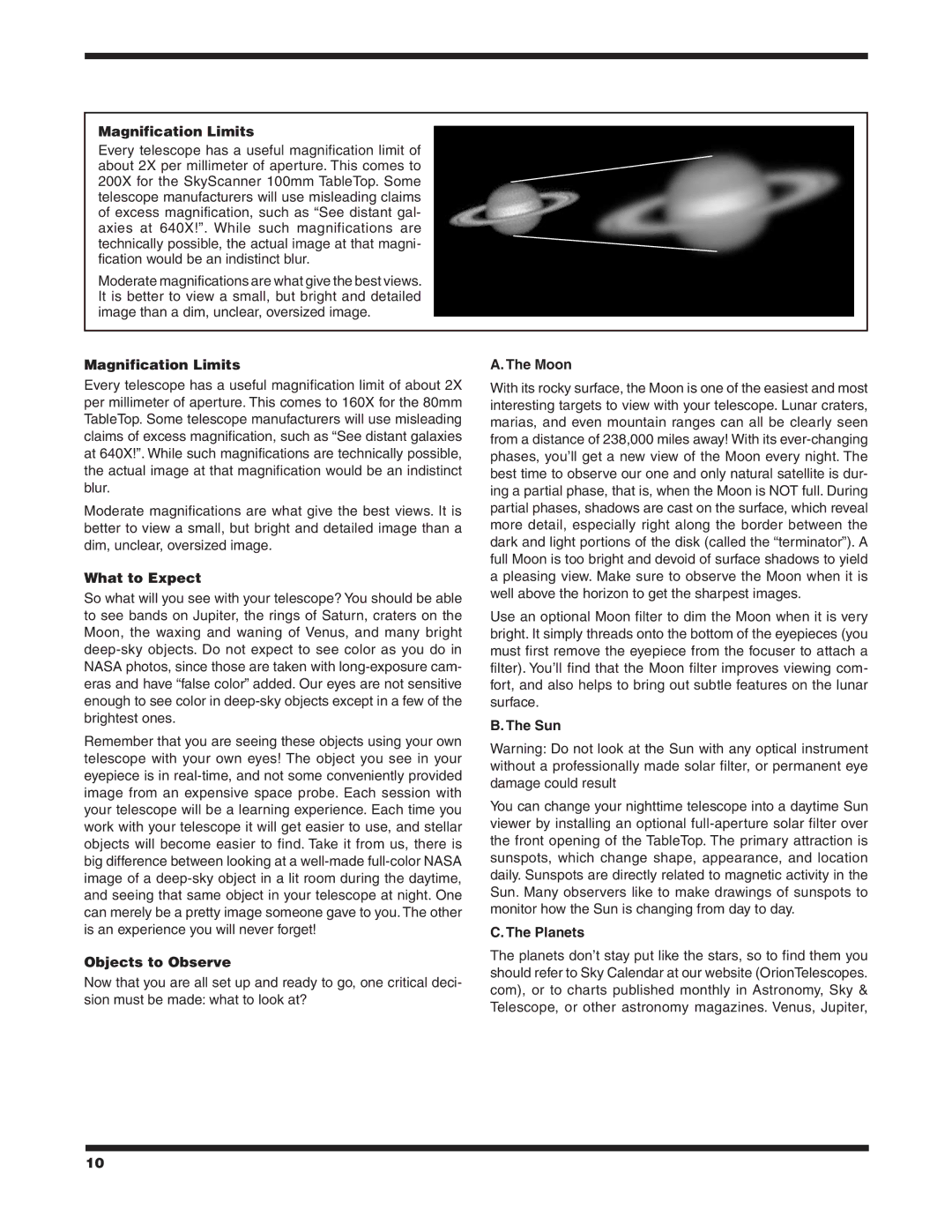
Magnification Limits
Every telescope has a useful magnification limit of about 2X per millimeter of aperture. This comes to 200X for the SkyScanner 100mm TableTop. Some telescope manufacturers will use misleading claims of excess magnification, such as “See distant gal- axies at 640X!”. While such magnifications are technically possible, the actual image at that magni- fication would be an indistinct blur.
Moderate magnifications are what give the best views. It is better to view a small, but bright and detailed image than a dim, unclear, oversized image.
Magnification Limits
Every telescope has a useful magnification limit of about 2X per millimeter of aperture. This comes to 160X for the 80mm TableTop. Some telescope manufacturers will use misleading claims of excess magnification, such as “See distant galaxies at 640X!”. While such magnifications are technically possible, the actual image at that magnification would be an indistinct blur.
Moderate magnifications are what give the best views. It is better to view a small, but bright and detailed image than a dim, unclear, oversized image.
What to Expect
So what will you see with your telescope? You should be able to see bands on Jupiter, the rings of Saturn, craters on the Moon, the waxing and waning of Venus, and many bright
Remember that you are seeing these objects using your own telescope with your own eyes! The object you see in your eyepiece is in
Objects to Observe
Now that you are all set up and ready to go, one critical deci- sion must be made: what to look at?
A. The Moon
With its rocky surface, the Moon is one of the easiest and most interesting targets to view with your telescope. Lunar craters, marias, and even mountain ranges can all be clearly seen from a distance of 238,000 miles away! With its
Use an optional Moon filter to dim the Moon when it is very bright. It simply threads onto the bottom of the eyepieces (you must first remove the eyepiece from the focuser to attach a filter). You’ll find that the Moon filter improves viewing com- fort, and also helps to bring out subtle features on the lunar surface.
B. The Sun
Warning: Do not look at the Sun with any optical instrument without a professionally made solar filter, or permanent eye damage could result
You can change your nighttime telescope into a daytime Sun viewer by installing an optional
C. The Planets
The planets don’t stay put like the stars, so to find them you should refer to Sky Calendar at our website (OrionTelescopes. com), or to charts published monthly in Astronomy, Sky & Telescope, or other astronomy magazines. Venus, Jupiter,
10
